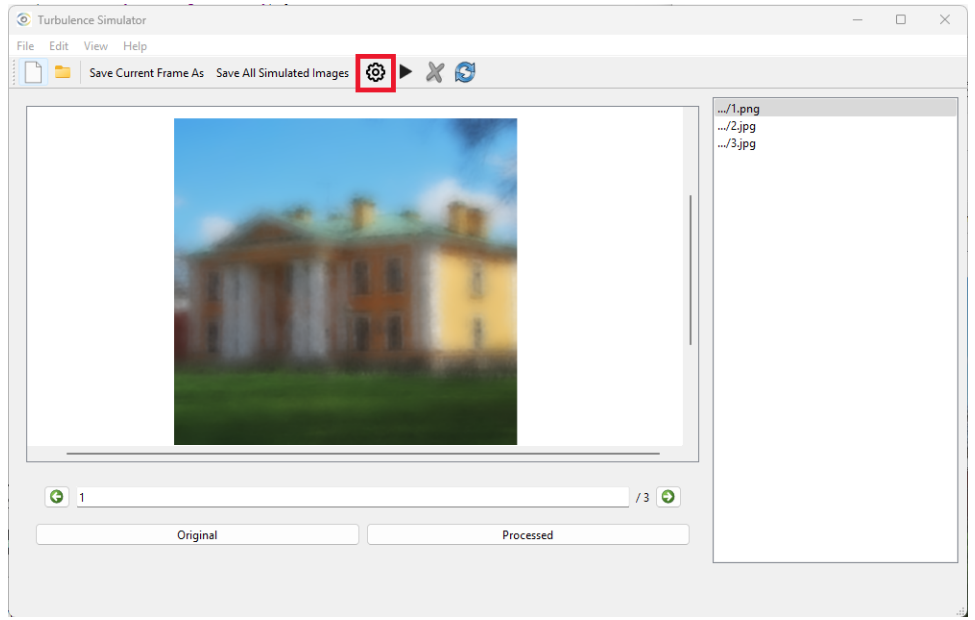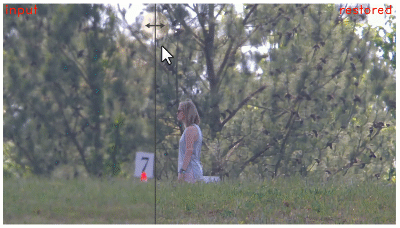Imaging through Atmospheric Turbulence
Overview
Imaging through atmospheric turbulence is a fundamental problem for long-range imaging systems. Purdue i2Lab has specialities in several aspects of the subject:
Wave optics theory
Turbulence simulators
Forward imaging models that can be used for deep neural networks
Image reconstruction algorithms
Object recognition
Book
Stanley H. Chan and Nicholas Chimitt, Computational Imaging through Atmospheric Turbulence, Now Publisher 2023.
Tutorial
ICIP 2022 and CVPR 2022
Instructors: Stanley Chan and Nick Chimitt
Recordings
Purdue Atmospheric Turbulence Simulator
Phase-over-aperture model (2020)
 |
Key Concept: Collapse screens and sample in the Zernike space. 20x speed up compared to split-step. Publication:
Code:
Project Page: https://github.itap.purdue.edu/StanleyChanGroup/TurbulenceSim_v1Public
|
Phase-to-space transform (2021)
 |
Key Concept: Transform Zernike representation to PSF representation. 1000x speed up compared to split-step. Publication:
Project Page: https://github.itap.purdue.edu/StanleyChanGroup/TurbulenceSim_P2S
|
Dense field phase-to-space transform (2022)
 |
Key concept: Quantize and decouple Zernike mode and spatial mode to preserve wide sense stationarity. Enables full HD without interpolation. Publication:
|
ATSyn Simulator (2025)
 |
Publication:
Code): (Credit to Misha Tsysin) |
Turbulence Reconstruction
Classical Optimization-based Approach (2020)
 |
Key concept: Lucky imaging + blind deconvolution Publication:
Project Page: |
TurbNet: Single-frame Turbulence Reconstruction (2022)
 |
Key concept: Re-blur the reconstructed image using a turbulence simulator Publication:
Project Page: |
PiRN: Physics-integrated Restoration Network (PiRN) (2023)
 |
Key concept: Simulator in the loop Publication: Ajay Jaiswal, Xingguang Zhang, Stanley H. Chan, Zhangyang Wang,
‘‘Physics-Driven Turbulence Image Restoration with Stochastic Refinement’’,
IEEE International Conference on Computer Vision (ICCV), 2023. Project Page: |
Turbulence Mitigation Transformer (TMT) (2024)
 |
Key concept: Two-stage mitigation, transformer, temporal attention Publication:
Project Page: |
Deep Atmospheric Turbulence Mitigation (DATUM) (2024)
 |
Key concept: Consistent with physical methods, recurrent network, deformable attention, version 5 simulator Publication:
Project Page: |
Learned Phase Distortion + Mamba (MambaTM) (2025)
 |
Key concept: Learned representation of the phase distortion, Mamba state-space modeling Publication:
Project Page: |
Theoretical Analysis
Tilt-then-Blur or Blur-then-Tilt
 |
Key conclusion: Tilt + blur is the correct model Publication:
|
Arbitrary Cn2 Profile
 |
Key concept: Integrate Cn2 along the path instead of evaluating individual turbulence segments Publication:
|
Scattering and Gathering for Spatially Varying Convolutions
 |
Key finding: Scattering is for optics simulation, whereas gathering is for signal filtering Publication:
|
